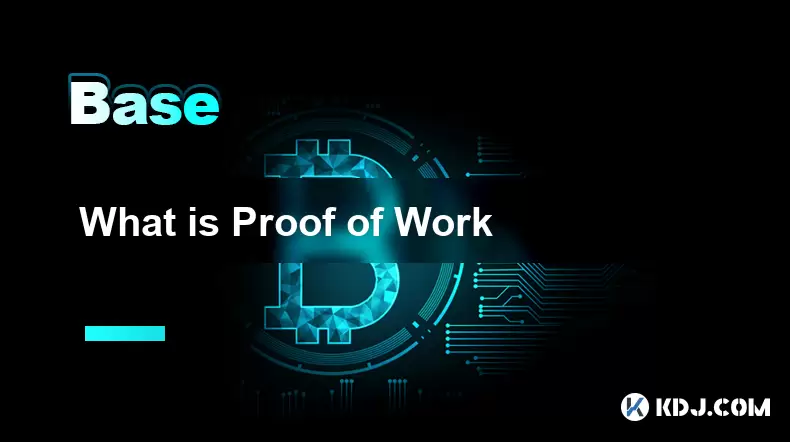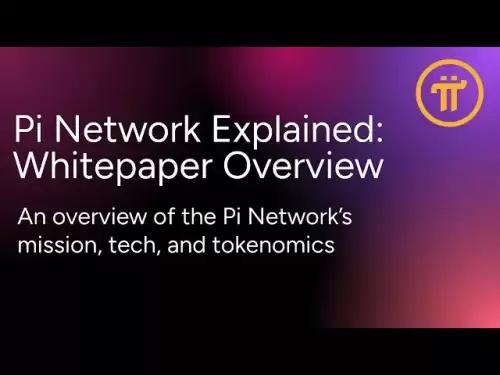-
 Bitcoin
Bitcoin $119,307.8340
-0.09% -
 Ethereum
Ethereum $2,996.2401
0.31% -
 XRP
XRP $2.9260
3.16% -
 Tether USDt
Tether USDt $1.0001
-0.03% -
 BNB
BNB $688.6252
-0.73% -
 Solana
Solana $162.0187
0.23% -
 USDC
USDC $0.9998
-0.01% -
 Dogecoin
Dogecoin $0.1967
-1.19% -
 TRON
TRON $0.3024
0.19% -
 Cardano
Cardano $0.7315
-1.48% -
 Hyperliquid
Hyperliquid $47.5984
-3.19% -
 Stellar
Stellar $0.4532
-8.55% -
 Sui
Sui $3.8371
6.14% -
 Chainlink
Chainlink $15.6789
-0.24% -
 Hedera
Hedera $0.2378
-2.85% -
 Bitcoin Cash
Bitcoin Cash $503.1103
-1.03% -
 Avalanche
Avalanche $21.1298
-1.01% -
 UNUS SED LEO
UNUS SED LEO $9.0046
-0.35% -
 Shiba Inu
Shiba Inu $0.0...01315
-2.17% -
 Toncoin
Toncoin $3.0254
1.93% -
 Litecoin
Litecoin $95.3181
0.32% -
 Monero
Monero $344.0683
2.10% -
 Polkadot
Polkadot $3.9387
-1.82% -
 Uniswap
Uniswap $9.0508
5.52% -
 Dai
Dai $0.9998
-0.01% -
 Ethena USDe
Ethena USDe $1.0004
-0.02% -
 Bitget Token
Bitget Token $4.4609
1.26% -
 Pepe
Pepe $0.0...01217
-2.34% -
 Aave
Aave $313.8047
1.56% -
 Bittensor
Bittensor $406.8340
3.03%
What is Proof of Work
Proof of Work secures blockchain networks by requiring miners to solve complex puzzles, ensuring decentralization and making tampering computationally expensive.
Jul 15, 2025 at 12:14 am

Understanding the Basics of Proof of Work
Proof of Work (PoW) is a consensus mechanism used in blockchain networks to validate transactions and create new blocks. It was first introduced by Satoshi Nakamoto in the Bitcoin whitepaper as a way to secure the network without relying on a central authority. In this system, miners compete to solve complex mathematical puzzles, and the first one to find a solution gets the right to add the next block to the blockchain.
The term "Proof of Work" refers to the fact that miners must prove they have performed a certain amount of computational work to solve the puzzle. This proof is verified by other nodes in the network before the block is accepted. The difficulty of these puzzles adjusts automatically based on the total computing power on the network to ensure consistent block times.
Key takeaway: Proof of Work ensures decentralization by making it computationally expensive and time-consuming to alter past blocks, thereby securing the integrity of the blockchain.
How Proof of Work Secures the Blockchain
In a Proof of Work system, each new block contains a list of transactions, a timestamp, a reference to the previous block (via its hash), and a nonce — a random number used once. Miners take this data and run it through a cryptographic hash function like SHA-256 in Bitcoin's case. The goal is to find a hash value that meets a specific target set by the network.
This process involves trial and error, where miners change the nonce repeatedly until they find a hash that starts with a certain number of zeros. Once found, this hash becomes the unique fingerprint of the block and is broadcasted to the network for validation.
- The miner broadcasts the solved block to the network
- Other nodes verify the solution quickly
- If valid, the block is added to the chain and the miner receives a reward
Critical point: Because altering any transaction would change the block’s hash, changing historical data becomes nearly impossible without redoing all the work since that block.
The Role of Miners in Proof of Work Networks
Miners are essential participants in Proof of Work-based blockchains. They not only validate transactions but also maintain the decentralized nature of the network. By dedicating computational resources, miners help secure the network against attacks such as double-spending or Sybil attacks.
Mining requires specialized hardware like ASICs (Application-Specific Integrated Circuits) or GPUs (Graphics Processing Units). These devices consume significant amounts of electricity, which is why mining operations are often located in regions with cheap energy.
- Miners invest in powerful hardware
- They pay for electricity and maintenance costs
- In return, they receive newly minted coins and transaction fees
Important note: Mining rewards decrease over time through events like Bitcoin halving, which cuts the block reward in half approximately every four years.
Energy Consumption and Environmental Impact
One of the most debated aspects of Proof of Work is its high energy consumption. Critics argue that PoW is unsustainable due to the massive amount of electricity required to mine cryptocurrencies like Bitcoin.
According to some estimates, Bitcoin mining consumes more electricity annually than some small countries. This has led to concerns about carbon emissions and environmental sustainability. However, proponents highlight that a growing portion of mining operations now use renewable energy sources like hydroelectric, wind, and solar power.
- High energy consumption raises ecological concerns
- Some mining farms utilize renewable energy
- Others operate in areas with surplus or stranded energy
Interesting insight: Energy usage varies depending on the price of the cryptocurrency, as higher prices incentivize more mining activity.
Alternatives to Proof of Work
Due to scalability and environmental concerns, many newer blockchains have moved away from Proof of Work toward alternative consensus mechanisms like Proof of Stake (PoS). In PoS, validators are chosen based on the number of coins they hold and are willing to "stake" as collateral, rather than their computational power.
Ethereum, the second-largest cryptocurrency by market cap, transitioned from PoW to PoS in 2022 through an upgrade known as "The Merge." This shift significantly reduced its energy consumption.
- Proof of Stake reduces energy consumption
- Delegated Proof of Stake (DPoS) allows token holders to vote for delegates
- Other models include Proof of Authority and Proof of Space-Time
Notable development: While PoS and other models offer efficiency benefits, many still see PoW as the gold standard for security and decentralization.
Frequently Asked Questions
What happens if two miners solve the puzzle at the same time?
If two miners find a valid solution simultaneously, the network temporarily splits into two competing chains. Nodes continue building on both chains until one gains more cumulative work (i.e., more blocks are added). Eventually, the longest chain prevails, and the shorter chain is discarded. Transactions from the discarded block may be re-included in future blocks.
Can someone manipulate the network by controlling a majority of the mining power?
Yes, this scenario is known as a 51% attack. If a single entity controls more than half of the network's mining power, they could potentially reverse transactions, prevent new transactions from being confirmed, or double-spend coins. However, executing such an attack on large networks like Bitcoin is extremely costly and difficult.
Is Proof of Work still relevant in modern blockchain systems?
While many new projects prefer alternatives like Proof of Stake, Proof of Work remains foundational to several major cryptocurrencies including Bitcoin, Litecoin, and Monero. Its resilience and proven track record make it a trusted model for those prioritizing security and decentralization over speed and energy efficiency.
How does the difficulty adjustment work in Proof of Work?
The difficulty adjustment ensures that blocks are mined at regular intervals, typically every 10 minutes for Bitcoin. Every 2016 blocks, the network recalculates the difficulty based on how much time it took to mine the previous set of blocks. If blocks were mined faster than expected, the difficulty increases; if slower, it decreases.
Disclaimer:info@kdj.com
The information provided is not trading advice. kdj.com does not assume any responsibility for any investments made based on the information provided in this article. Cryptocurrencies are highly volatile and it is highly recommended that you invest with caution after thorough research!
If you believe that the content used on this website infringes your copyright, please contact us immediately (info@kdj.com) and we will delete it promptly.
- BDAG X1 App Skyrockets, SHIB Rebounds, and XMR Holds Strong: What's Happening?
- 2025-07-15 07:10:12
- Ruvi AI: The Audited Token Set to Outshine Ethereum with Massive Gains?
- 2025-07-15 06:50:12
- DeFi Token with 10X Potential: Mutuum Finance and the Year-End Opportunity
- 2025-07-15 06:50:12
- Bitcoin's Wild Ride: $120K Surge, Crypto Bill Buzz, and What It All Means
- 2025-07-15 07:10:12
- XRP's Cup and Handle: Millionaire Target in Sight?
- 2025-07-15 07:50:12
- Ethereum, 2025 Prediction & Ozak AI: Are New?
- 2025-07-15 06:30:12
Related knowledge

What is the Bitcoin dominance index
Jul 12,2025 at 10:35pm
Understanding the Bitcoin Dominance IndexThe Bitcoin Dominance Index, often abbreviated as BTC.D, is a metric used to measure Bitcoin's market capital...

What is the Bitcoin dominance index
Jul 11,2025 at 04:29am
What is the Bitcoin Dominance Index?The Bitcoin Dominance Index is a metric used to gauge Bitcoin's market capitalization relative to the total market...

Can crypto be a hedge against inflation
Jul 14,2025 at 12:21am
Understanding the Concept of Hedging Against InflationInflation refers to the general increase in prices and fall in the purchasing value of money ove...

Can crypto be a hedge against inflation
Jul 12,2025 at 12:07pm
Understanding the Role of Blockchain in Decentralized Finance (DeFi)Blockchain technology serves as the backbone of decentralized finance, offering a ...

What are account abstraction wallets
Jul 13,2025 at 01:43am
Understanding the Concept of Account AbstractionAccount abstraction is a term frequently used in the Ethereum ecosystem, particularly within discussio...

What does "gas limit" vs "gas price" mean
Jul 13,2025 at 04:00am
Understanding the Basics of Gas in Blockchain TransactionsIn the Ethereum and other EVM-compatible blockchains, every transaction requires computation...

What is the Bitcoin dominance index
Jul 12,2025 at 10:35pm
Understanding the Bitcoin Dominance IndexThe Bitcoin Dominance Index, often abbreviated as BTC.D, is a metric used to measure Bitcoin's market capital...

What is the Bitcoin dominance index
Jul 11,2025 at 04:29am
What is the Bitcoin Dominance Index?The Bitcoin Dominance Index is a metric used to gauge Bitcoin's market capitalization relative to the total market...

Can crypto be a hedge against inflation
Jul 14,2025 at 12:21am
Understanding the Concept of Hedging Against InflationInflation refers to the general increase in prices and fall in the purchasing value of money ove...

Can crypto be a hedge against inflation
Jul 12,2025 at 12:07pm
Understanding the Role of Blockchain in Decentralized Finance (DeFi)Blockchain technology serves as the backbone of decentralized finance, offering a ...

What are account abstraction wallets
Jul 13,2025 at 01:43am
Understanding the Concept of Account AbstractionAccount abstraction is a term frequently used in the Ethereum ecosystem, particularly within discussio...

What does "gas limit" vs "gas price" mean
Jul 13,2025 at 04:00am
Understanding the Basics of Gas in Blockchain TransactionsIn the Ethereum and other EVM-compatible blockchains, every transaction requires computation...
See all articles

























































































